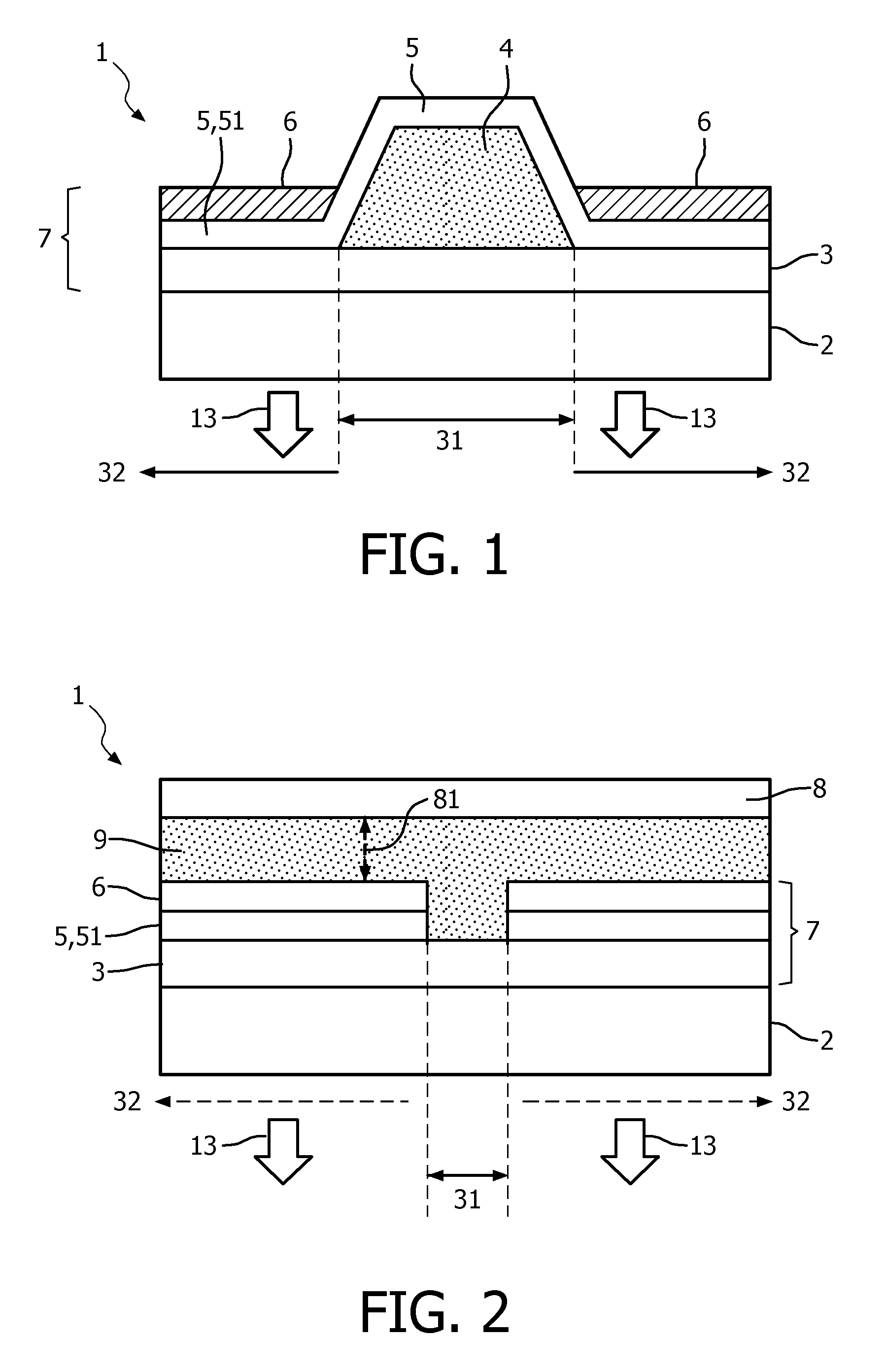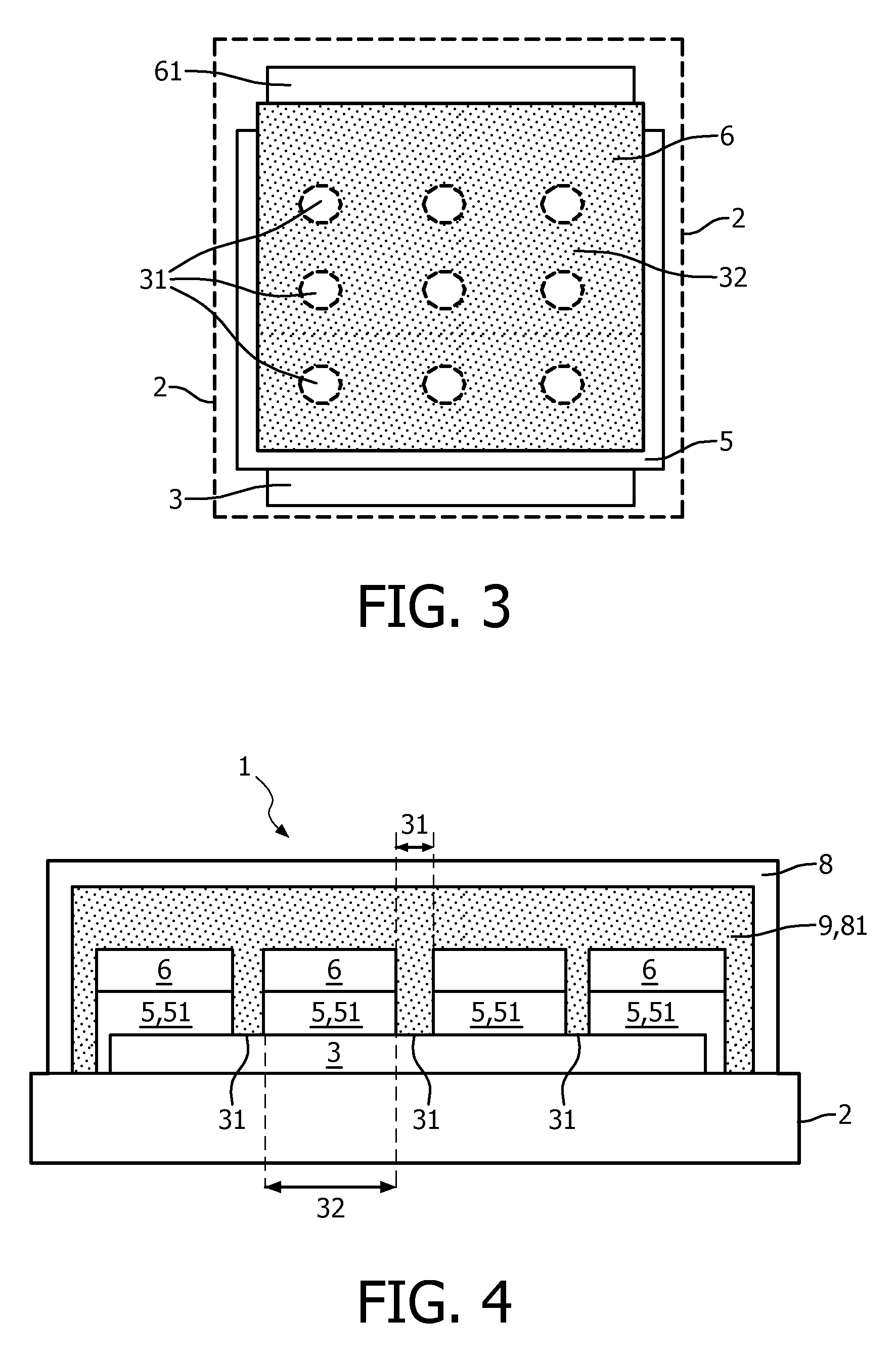Structuring of OLEDs using stack modification layer comprising perfluorinated vacuum grease and/or perfluorinated vacuum pump oil
a technology of perfluorinated vacuum grease and perfluorinated vacuum pump oil, which is applied in the direction of organic semiconductor devices, discharge tube luminescnet screens, and testing/measurement of semiconductor/solid-state devices, etc. it can solve the problems of large number of masks, limited shielded areas, and inability to fully cover the deposited material. , to achieve the effect of convenient, flexible and reliabl
- Summary
- Abstract
- Description
- Claims
- Application Information
AI Technical Summary
Benefits of technology
Problems solved by technology
Method used
Image
Examples
example 1
Substrate Glass with ITO 150 nm on Top
[0046]Stack modification layer: Tyreno fluid (vacuum pump oil) applied manually with a paint-brush.
[0047]Organic layer stack: deposition of hole injector, hole transport layer, emitter layer, hole blocking layer and electron transport layer on top of substrate. Then LiF and Aluminum evaporated, common evaporation process.
[0048]Second electrode: Aluminum covers the second areas but does not attach to this film when there is a stack modification layer underneath as present within the first areas. Removal step: with FC-43 (washing) as the solvent, removes all visible traces of oil Cleaning step: Additional O2 plasma cleaning (see below)
example 2
Stack Modification Layer: TEC Grease
[0049]Removal step: with FC-43 as the solvent, washing with FC-43 dissolved the oil or the grease and allows removing the parts of the organic layers on top of the stack modification layer.
[0050]Cleaning step: O2 plasma cleaning (Diener electronics plasma processor “Nano”) removes last traces of stack modification layer or solvent. Cover lids can be applied by glue.
[0051]The not mentioned layers are the same as listed in example 1.
[0052]FIG. 6 shows one embodiment of the method steps for manufacturing OLED devices 1 according to the present invention out of an array of second areas 32 by cutting CT the substrate 2 along the first areas 31 (as indicated by the dashed lines CT). The second areas 32 are arranged in an array of rectangular shaped second areas 32 arranged in rows and columns with stripe like first areas 31 in between. The structured pattern are designed to separate light-emitting second areas 32 from each other by arranging first areas...
PUM
 Login to View More
Login to View More Abstract
Description
Claims
Application Information
 Login to View More
Login to View More - R&D
- Intellectual Property
- Life Sciences
- Materials
- Tech Scout
- Unparalleled Data Quality
- Higher Quality Content
- 60% Fewer Hallucinations
Browse by: Latest US Patents, China's latest patents, Technical Efficacy Thesaurus, Application Domain, Technology Topic, Popular Technical Reports.
© 2025 PatSnap. All rights reserved.Legal|Privacy policy|Modern Slavery Act Transparency Statement|Sitemap|About US| Contact US: help@patsnap.com



